TGF-β / Smad Signaling
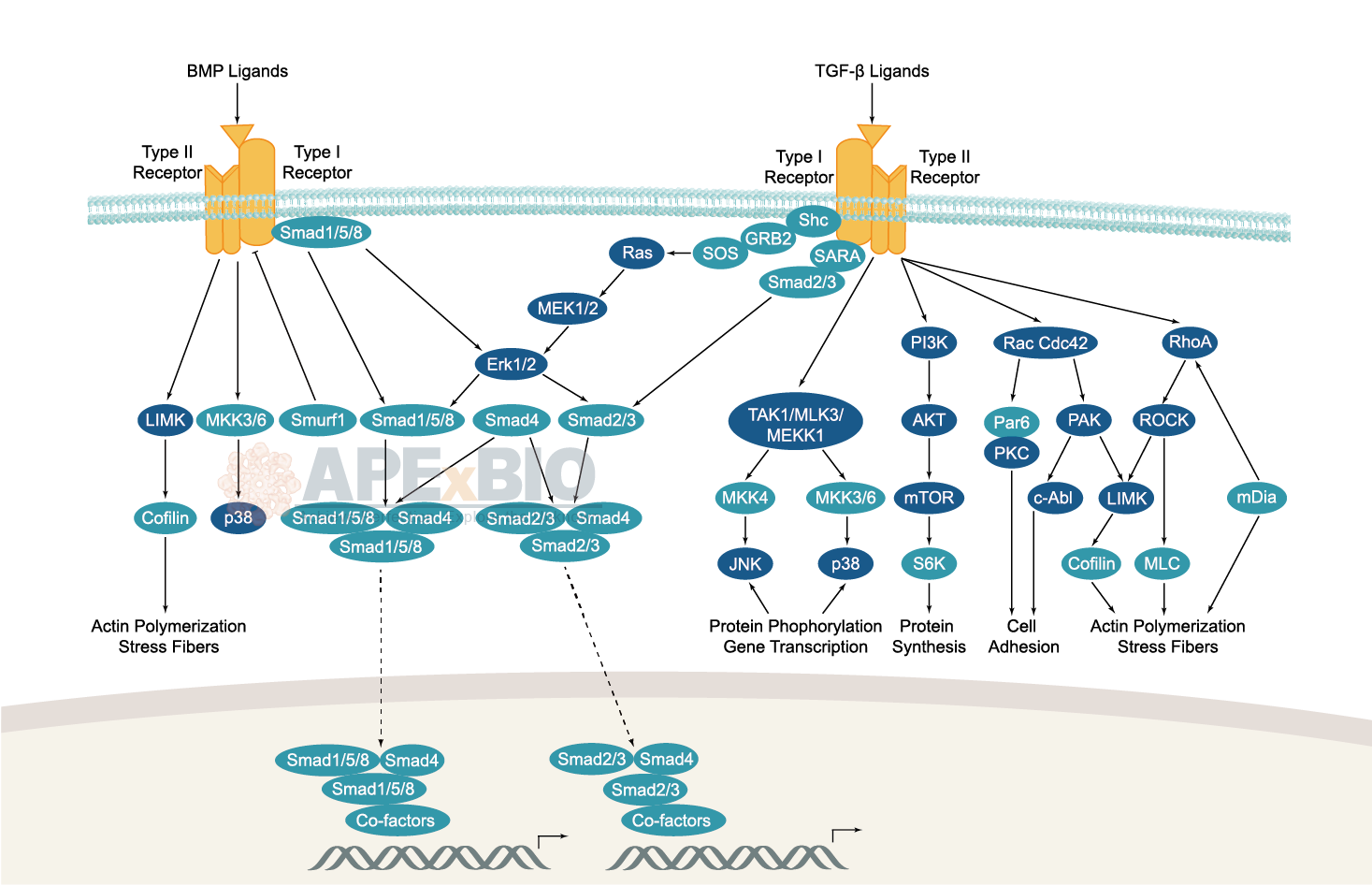
The TGF-β family is generally classified into two sub-families, TGF-β ligands, and bone morphogenic protein (BMP) ligands. In canonical signaling, receptor activation lead to phosphorylation of a group of transcription factors called Smads. TGF-β ligands bind to type II receptors (TGF-β II) which recruit and phosphorylate type I receptor (TGF-β I) on serine/threonine residues. The TGF-β I then recruits and phosphorylates a receptor regulated Smad (R-Smad). The R-Smad binds to the common Smad (Co-Smad) and forms a heterodimeric complex. This complex then translocates into the cell nucleus where it binds with nuclear co-factors to regulate the transcription of various target genes. Dysregulation of TGF-β/Smad signaling pathway is associated with a number of pathological conditions including fibrosis, cancer, immunodeficiency, diabetes and cardiovascular diseases etc.
-
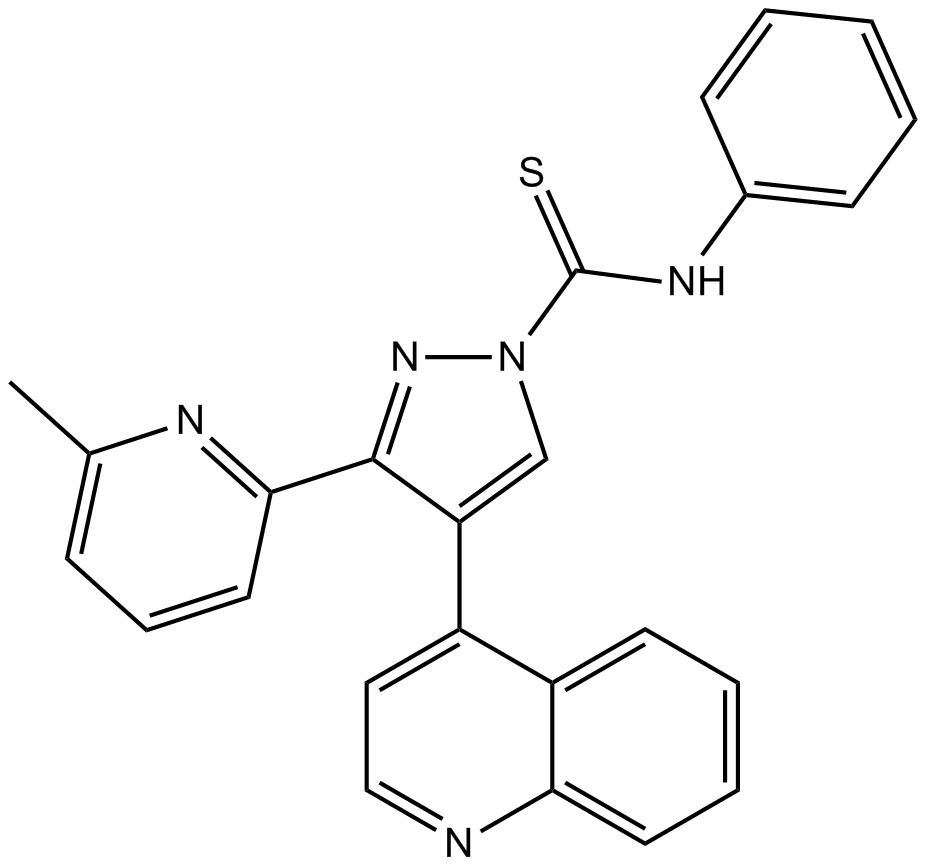 A3133 A 83-01Summary: ALK-5 inhibitor
A3133 A 83-01Summary: ALK-5 inhibitor -
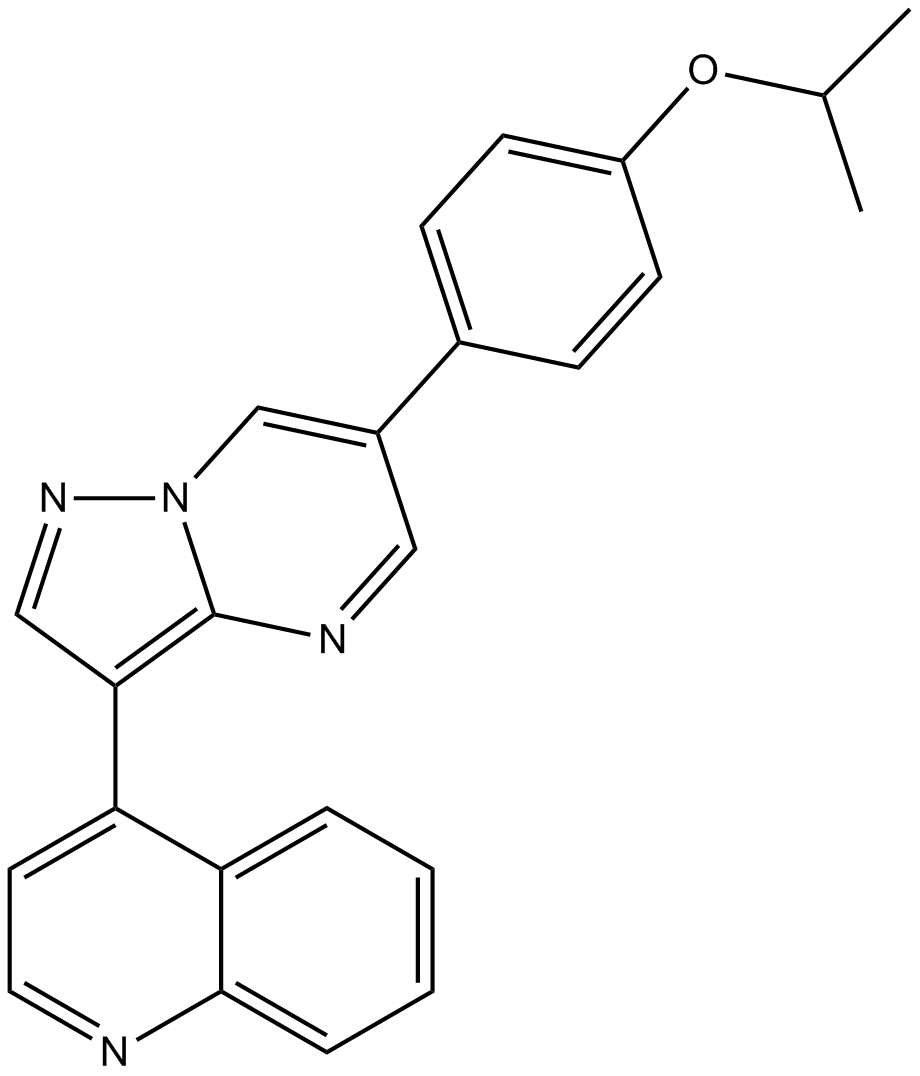 B3686 DMH-1Target: BMP and Other Activin ReceptorsSummary: Selective BMP ALK2 receptor
B3686 DMH-1Target: BMP and Other Activin ReceptorsSummary: Selective BMP ALK2 receptor -
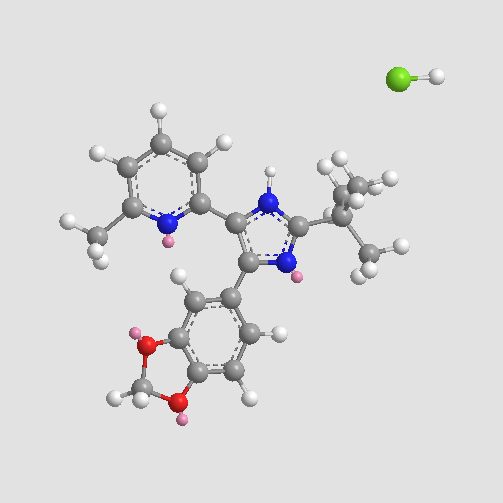 A3799 SB-505124 hydrochlorideTarget: ALKSummary: ALK5/ALK4/ALK7 inhibitor in TGF-β/activin signalling,selective
A3799 SB-505124 hydrochlorideTarget: ALKSummary: ALK5/ALK4/ALK7 inhibitor in TGF-β/activin signalling,selective -
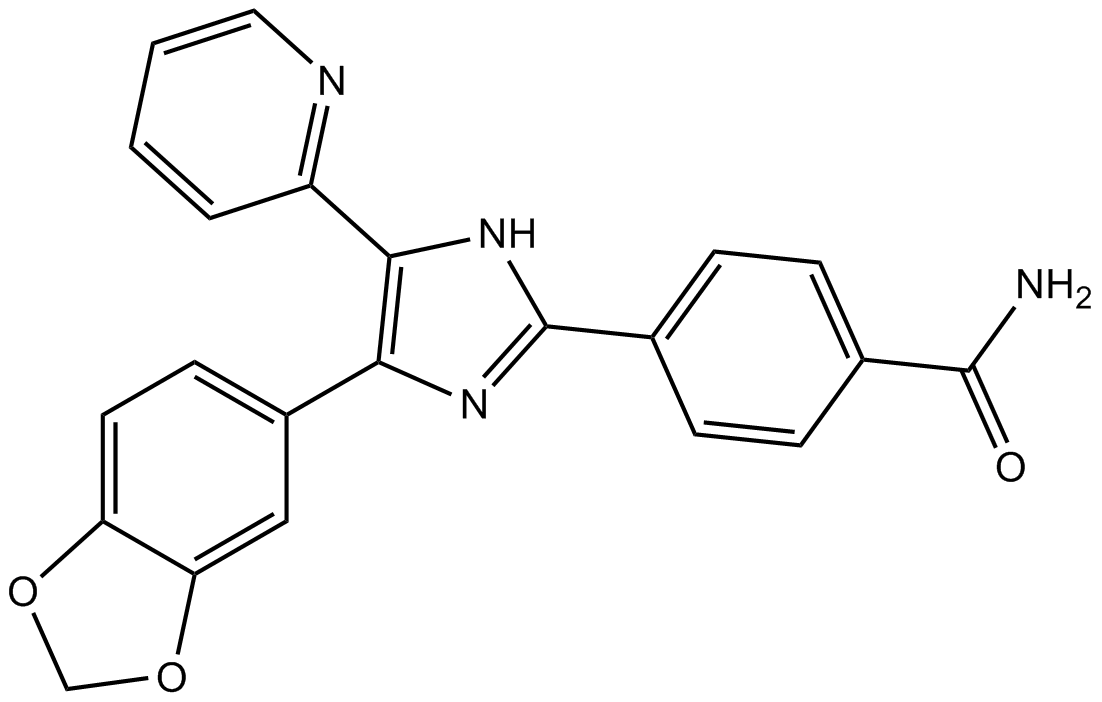 A8249 SB 4315422 CitationSummary: ALK inhibitor
A8249 SB 4315422 CitationSummary: ALK inhibitor -
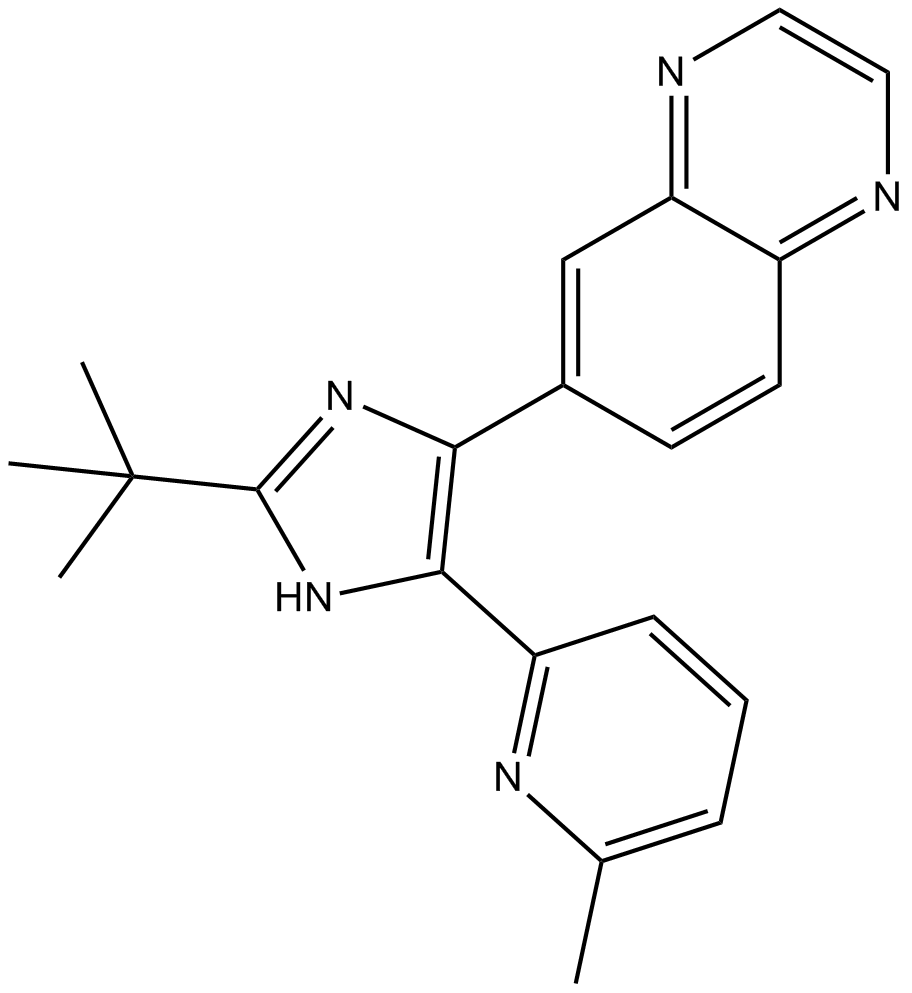 A5602 SB525334Summary: (TGF-beta1) receptor inhibitor
A5602 SB525334Summary: (TGF-beta1) receptor inhibitor -
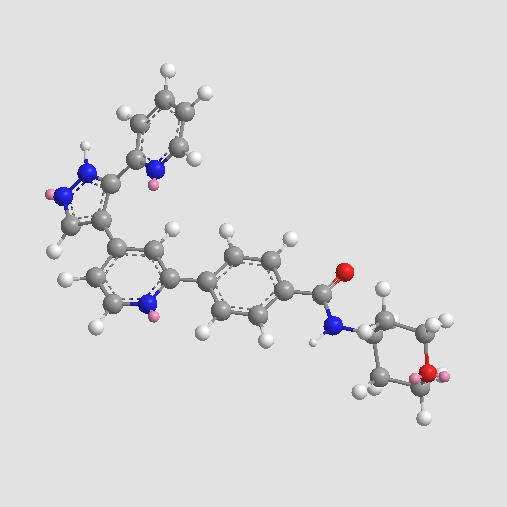 A8301 GW788388Summary: ALK5 inhibitor,potent and selective
A8301 GW788388Summary: ALK5 inhibitor,potent and selective -
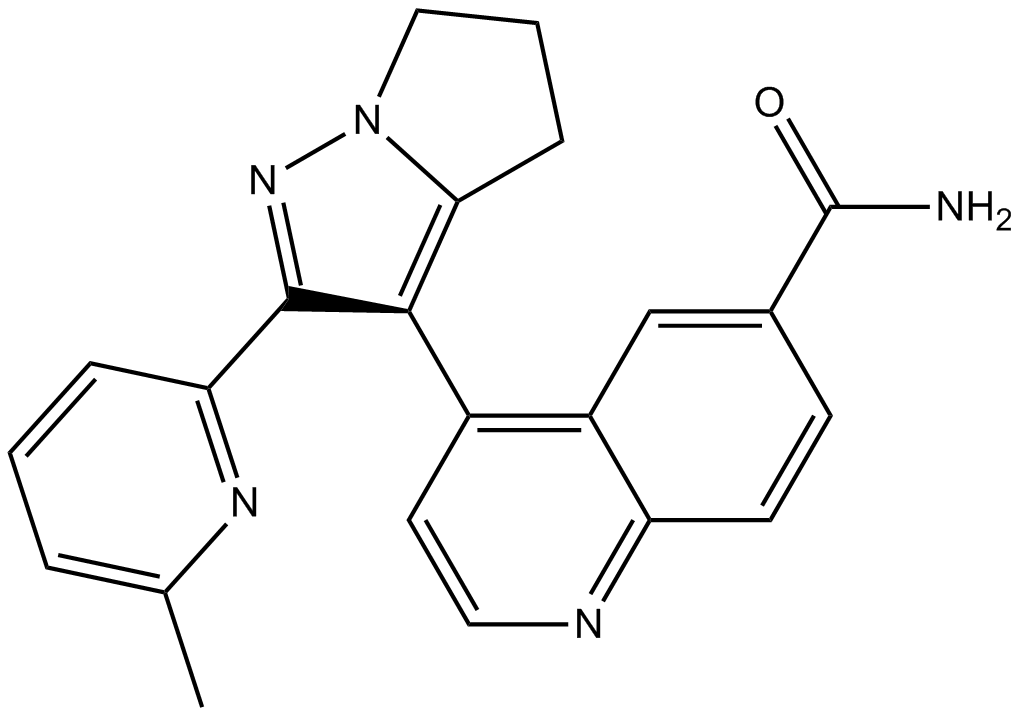 A8348 LY21572992 CitationSummary: TGF-βR1 inhibitor,potent and selective
A8348 LY21572992 CitationSummary: TGF-βR1 inhibitor,potent and selective -
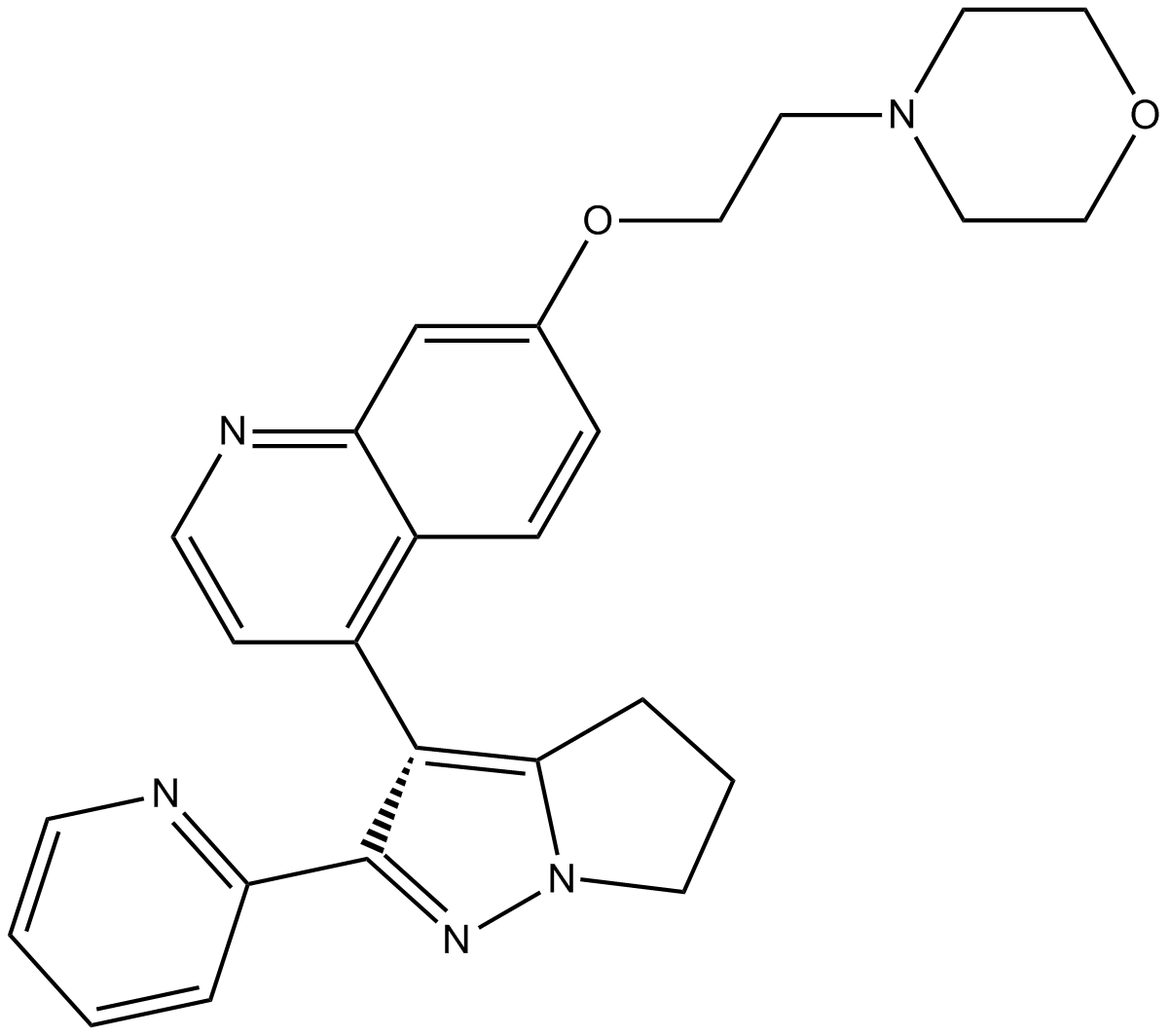 A8464 LY21097614 CitationSummary: TβRI/II kinase inhibitor
A8464 LY21097614 CitationSummary: TβRI/II kinase inhibitor -
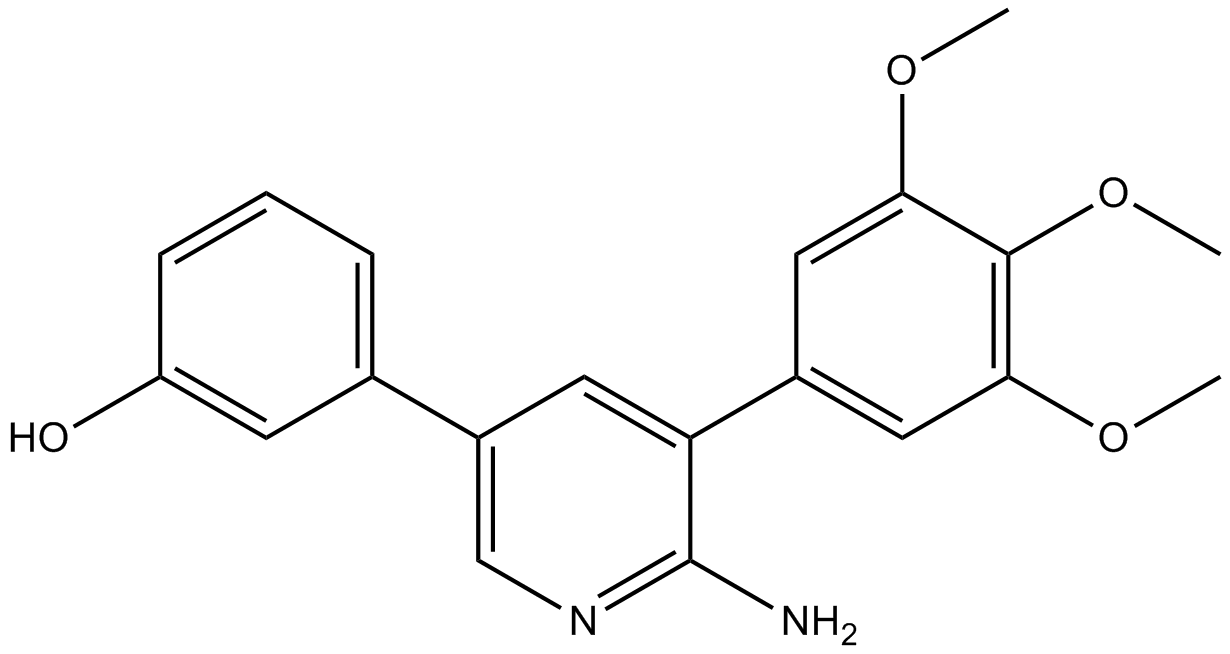 B2286 K02288Target: ALKSummary: ALK inhibitor
B2286 K02288Target: ALKSummary: ALK inhibitor

